This week’s interview on Professor David Flint’s Save The Nation Program explained why Australians face decades of economic stagnation under current policy settings.
Below are highlights from the interview.
Edited Transcript:
Australia is currently experiencing its longest per capita recession in recorded history.
What that means is that while the overall economy is growing very slowly, because we have this extreme population growth, the economy per person has actually shrunk for six consecutive quarters and seven of the last eight quarters.
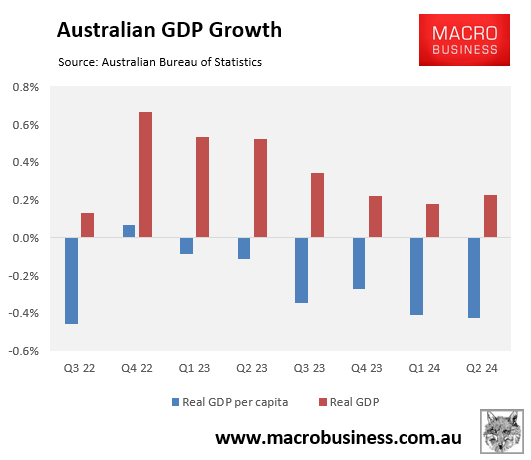
That represents the longest continuous decline in Australia’s per capita growth in recorded history.
This week, the International Monetary Fund released it latest World Economic Outlook, which downgraded Australia’s growth for this year to only 1.2%.
The OECD and Deloitte also recently downgraded Australia’s growth for this year to just 1.1%.
This projected growth comes in the context of a population that is currently growing by 2.3% annually and by the end of the year is forecast to be growing at about 2%.
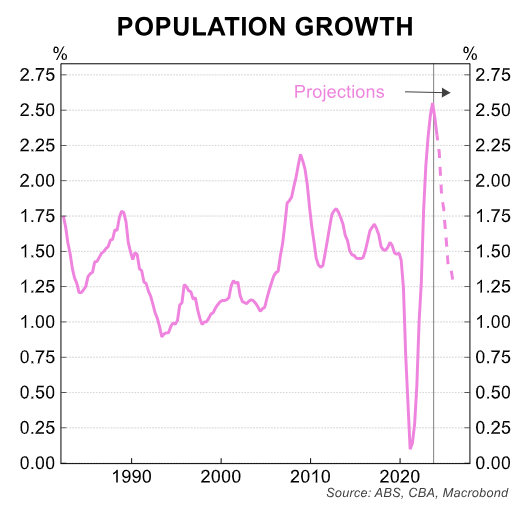
What this means is that Australia’s economy is going to continue to shrink in per capita terms well into next year. And it could end up being that Australia’s economy experiences a per capita recession of up to 10 consecutive quarters.
We are already at six quarters and if this runs for another four, which these projections suggest, then Australia could experience an extraordinary 2.5 year decline in per capita GDP.
I cannot see Australia getting out off this low growth path over the longer term.
Sure, we will obviously come out of a per capita recession and we will start recording growth as immigration retraces, interest rates are cut, those sorts of things.
However, the problem with the Australian economy is that we are on a low growth future because our productivity is awful.
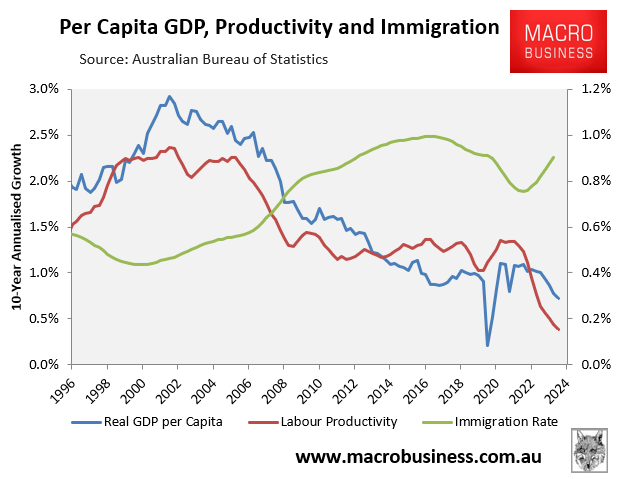
Australia’s economy is now being swallowed up by government-funded jobs. Not necessarily in the public service, but things that are government funded.
These government aligned jobs are most notably related to the National Disability Insurance Scheme (NDIS), which is growing at a rate of around 20% annually.
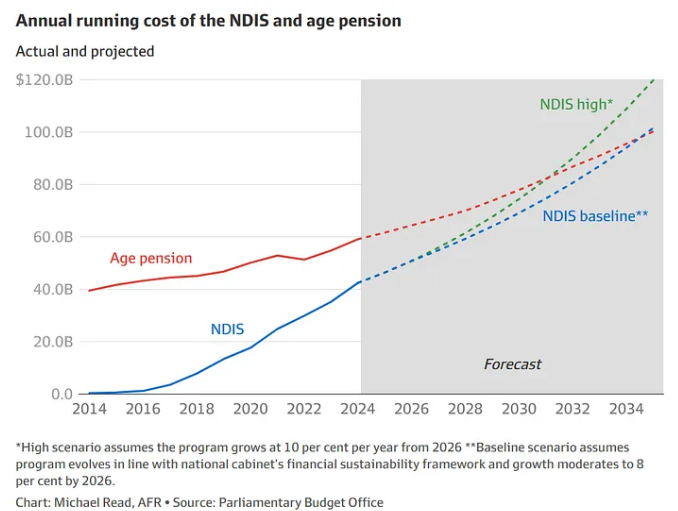
Government-aligned jobs are creating nearly all of the job growth in the Australian economy.
According to the chief economist at IFM Investors, Alex Joiner, in the last two years, market-based jobs – effectively jobs in the private sector – have only grown by 1 1% over two years.
By comparison, jobs in the government-aligned or non-market sector, which are reliant on government funding, grew at double digit rates in the last two years.
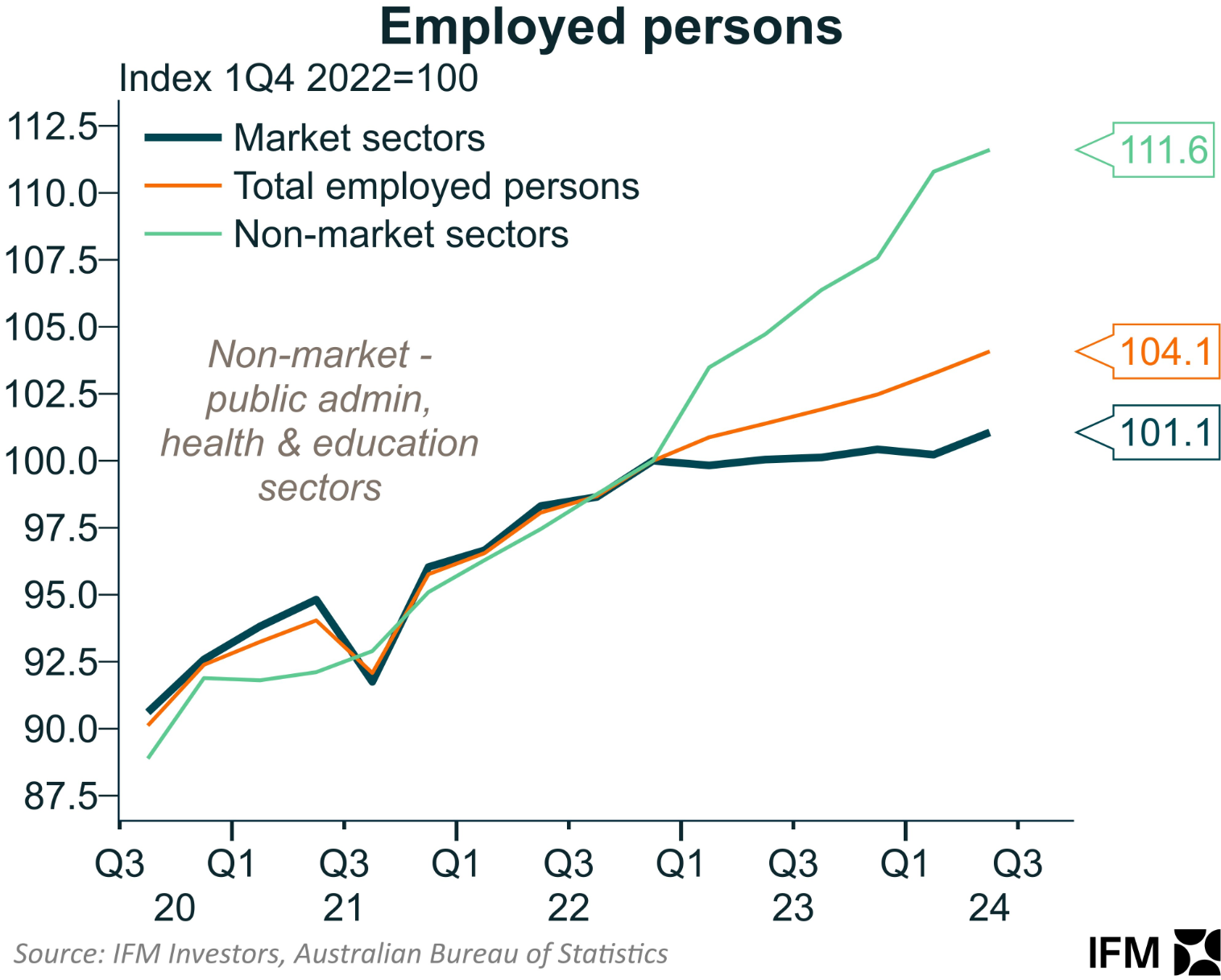
What this basically tells you is that we have an economy which is becoming more reliant on government spending and government funding. And we have a private sector or market sector that is shrinking in a relative sense.

The problem with this situation is that productivity growth in the non-market sector – in those government aligned areas – is deplorable. It is far worse than the market sector.
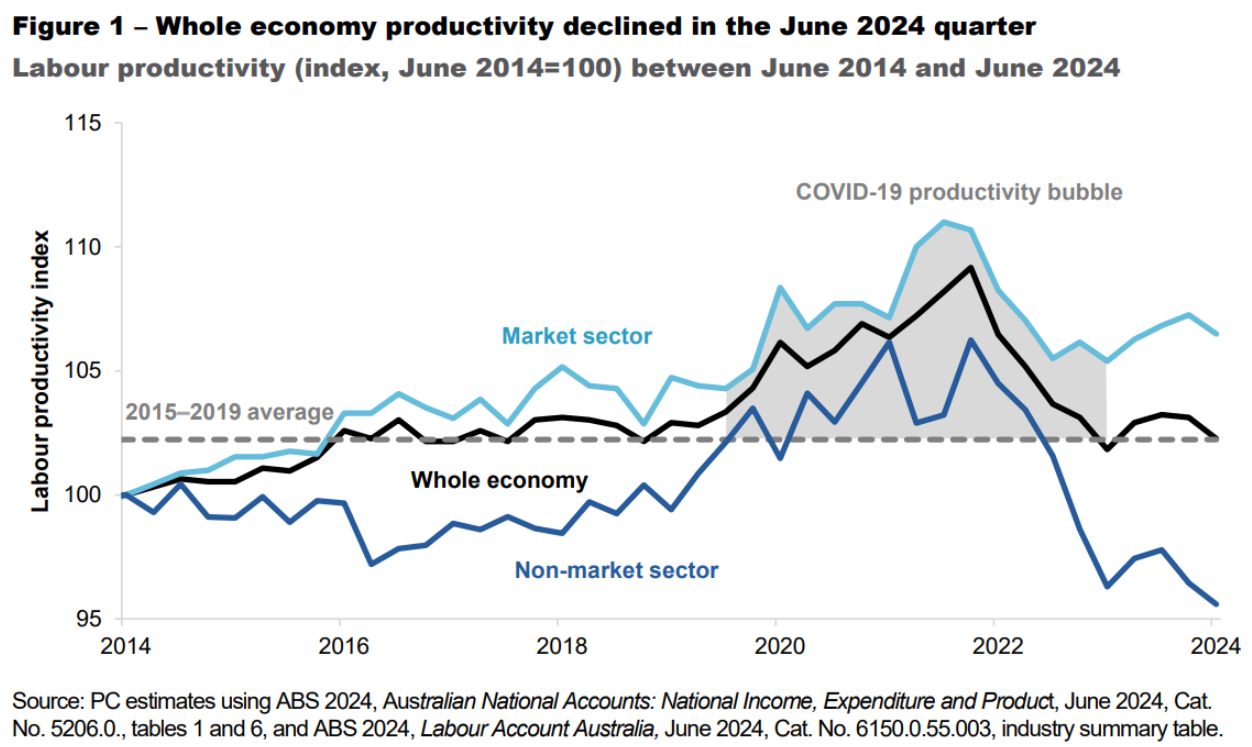
This also tells you that the Australian economy is going to be on a low productivity path into the future, which means that our per capita growth is going to remain stunted for the foreseeable future while these policy settings are in place.
It does not mean that we will forever remain in a per capita recession. But it does mean that we are going to have a very low growth, low productivity future whereby material living standards as measured by GDP per capita are going to be growing very slowly and much worse than in the past.
Moreover, GDP per capita is only one measure and it is a very narrow measure of well-being. When you put other measures in there, like traffic congestion and the quality of housing, etc., I would argue that Australia’s living standards are actually going to fall over the period ahead.
This is because we are going to have low material growth in living standards through GDP per capita and incomes.
At the same time, other measures that are not captured in the aggregate economic statistics, such as your amenity and quality of life, are all going to worsen under Australia’s current economic model.

